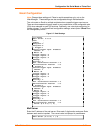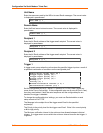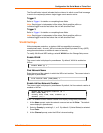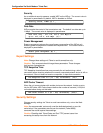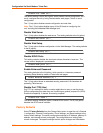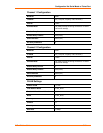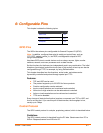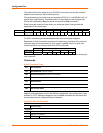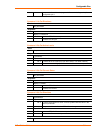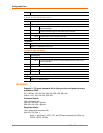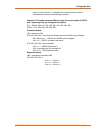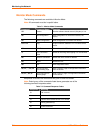
WiPort™ User Guide 6-1
6
6
:
:
C
C
o
o
n
n
f
f
i
i
g
g
u
u
r
r
a
a
b
b
l
l
e
e
P
P
i
i
n
n
s
s
This chapter includes the following topics:
Topic Page
GPIO Pins 6-1
Control Protocol 6-1
Examples 6-4
GPIO Pins
The WiPort has eleven pins configurable for General Purpose I/O (GPIO).
Note: In addition, configure these pins for serial port control lines, such as
CTS, RTS, modem_control_in, and DCD, and diagnostic outputs to LED,
using DeviceInstaller.
Use these GPIO pins to control devices such as relays, servers, lights, monitor
switches, sensors, and even processes such as data transfer.
Set the functions for the three pins independently and in any combination. The initial
directions (input/output) and active levels (low or high active) at boot up can also be
configured through 77FE, for example, by using DeviceInstaller.
This chapter describes how the directions, active levels, and states can be
dynamically controlled and probed through special port 77F0.
Features:
TCP and UDP can be used.
The protocol supports up to 32 GPIO for future products.
Function configuration can be retrieved.
Input or output selection can be retrieved and controlled.
Active low or high selection can be retrieved and controlled.
Active or inactive selection can be retrieved and controlled.
77F0 can be disabled.
Every change of state (active/inactive) requires a command over TCP or UDP, and
thus is not very fast. If you use this port for data transfer, the throughput is low,
usually up to 1Kbps.
Control Protocol
The GPIO control protocol is a simple, proprietary protocol, which is described below.
Guidelines
The GPIO control protocol is described from the PC side. Send means from PC to
WiPort. Response comes from WiPort to PC.



